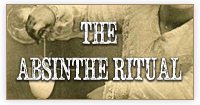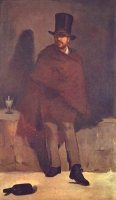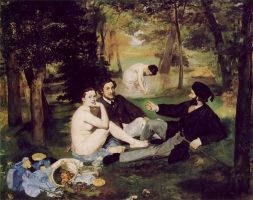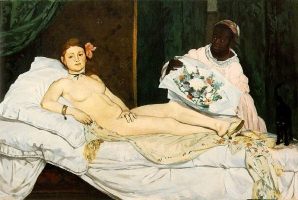Absinthe.se
The premier independent absinthe resource since 2003
I sit at my door, smoking a cigarette and sipping my absinthe, and I enjoy every day without a care in the world.
- Paul Gaugin, 1897
Edouard Manet, 1832-1883
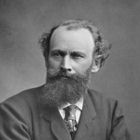
In 1859 Manet produced the first great absinthe painting. Entitled The Absinthe Drinker it caused a scandal at the 1859 Salon, where the selection committee refused to hang it. With cafe society being hijacked by absinthe, this portrait of a swaggering, dandy drunkard (an actual friend of Manet) offended the establishment. They were used to seeing drunks depicted as pitiful, downtrodden wretches, and this man's pride and vitality scared them. The committee attacked the painting for its 'vulgar realism'. And it was not isolated criticism. As Manet wrote in a letter to the poet Baudelaire; "Insults are pouring down on me as thick as hail".
Edouard Manet, 23 January 1832 - 30 April 1883, born in Paris was a French painter and one of the forefront figures of the transition from Realism into Impressionism.
Edouard was the son came from an upper class, well connected family. His mother, Eugénie-Desirée Fournier, was the daughter of a diplomat and actually the goddaughter of the Swedish crown prince at that time, Charles Bernadotte. His father, Auguste Manet, was a French judge.
Edouard Manet and absinthe
Even though absinthe was readily available and began taking up much more space in Parisian life, it hadn't taken off like it would, just quite yet. However, this didn't stop Edouard from painting the infamous "The Absinthe Drinker". A painting causing much controversy when it was displayed at the Salon in 1859. People were offended by the realistic feel of the painting and the technique used in it. And the fact that it was decadent as it suddenly depicted a drunk not as something dreadful in the gutter. This was not the first, nor the last time Manet would stir things up at the Salon, though.
In 1863 his work "The Luncheon on the Grass (Le déjeuner sur l'herbe)" was rejected by the Salon because of it's nudity and the way if was presented. A naked woman together with fully dressed men at a picnic! The outrage! The painting was, however, displayed at the Salon des Refusés instead. An alternative exhibition initiated by Emperor Napoleon III after the Salon had rejected over 4,000 pieces that same year.
Later, in 1865, Manet once more took a lot of heat when his painting "Olympia", very frankly showing a nude, self confident, prostitute and her, fully dressed, black servant created a scandal.
Regardless, Edouard Manet was to become one of the greatest French painters of all times.
The Absinthe Drinker can be seen as a regular item at Ny Carlsberg Gylptotek, Copenhagen, Denmark.
Luncheon in the Grass and Olympia can both be seen at Musée d'Orsay, Paris, France.
Written by Markus Hartsmar
- absinthe books and poetry -
Many writers "of old" wrote poems or passages about absinthe. Some drank it, some didn't. Find some of them here as well as reviews and notes on modern books about absinthe.
- latest news and additions -
The Absinthe Poetry section has seen several updates the past days. Poems and information about more authors; Antonin Artaud, Arthur Symons, Francis Saltus Saltus, Florence Folsom and Robert Loveman. Open your mind and have a drink while you enjoy their lyrics.
Read more...
- absinthe.se on facebook -
It's the new bistro, the new bar in town. A good place to meet when meeting in real life isn't always an option. Meet me on facebook for more updates from the absinthe world.

